- 2024中國陜西
- 陜西省人民政府新聞辦公室
- 2188字
- 2024-06-19 14:50:50
歷史文化
History and Culture
悠久歷史
Long History
中華人文始祖黃帝5000多年前在陜西開創了中華文明,位于黃陵縣的黃帝陵和位于寶雞市的炎帝陵,是中華文明發祥地的重要標志。
中國歷史上有西周、秦、漢、唐等14個政權在陜西建都。秦朝是中國第一個中央集權的封建王朝。到西漢時期,社會、經濟、文化全面發展,漢唐絲綢之路從陜西發端。唐朝是中國歷代最強盛的王朝,都城長安不僅是當時中國政治、經濟、文化的中心,更是國際聞名的大都市。
唐代以后,統治中心東移,陜西不再是中國政治、經濟的中心,但在中國政治、經濟和軍事上仍占有重要地位,直到近代,一直是西部重鎮。
Around 5,000 years ago, China's cultural ancestor, the Yellow Emperor, created the Chinese civilization in Shaanxi. The Yellow Emperor Mausoleum in Huangling County and Emperor Yandi' s Mausoleum in Baoji City are prominent symbols of the birthplace of Chinese civilization.
Altogether 14 dynasties, including the Western Zhou, the Qin, the Han and the Tang, established their capitals in Shaanxi. The Qin Dynasty is the first unified feudal dynasty with a centralized political system in the history of China. The Western Han Dynasty witnessed the integrated development of the society, the economy and the culture. The Silk Road started from Shaanxi during the Han and the Tang dynasties. The Tang Empire was the most powerful among China's dynasties in history. Chang'an, the capital of Tang, was not only the political, economic and cultural center of China, but also a famous international metropolis.
After the Tang Dynasty, the center of governmental administration moved eastward. Shaanxi was no longer the political and economic center of China. However, Shaanxi still occupied an important position in politics, economy and military of China. Up to modern times, Shaanxi has been considered as a crucial area within western China.

陜西歷史博物館秦漢館
紅色文化
Revolutionary Culture
陜西是紅色革命沃土,延安是中國革命圣地。從1935年到1948年,延安是中共中央的所在地,是中國人民解放斗爭的總后方。毛澤東等老一輩革命家培育形成的延安精神,是中華民族精神寶庫中的寶貴財富。延安現存革命紀念地400余處,其中寶塔山、鳳凰山、楊家嶺、棗園、王家坪、陜甘寧邊區政府舊址等最為著名。
陜甘邊照金革命根據地位于銅川市耀州區。20世紀30年代初,劉志丹、謝子長、習仲勛等老一輩革命家在這里創建了以照金為中心的陜甘邊革命根據地。陜甘邊照金革命根據地的建立,點燃了西北革命的火種,為后來陜北革命根據地的建立創造了條件,在中國革命史上留下了光輝的一頁。
2004年,陜甘邊革命根據地照金紀念館正式開館,成為全國100個紅色旅游經典景區之一。
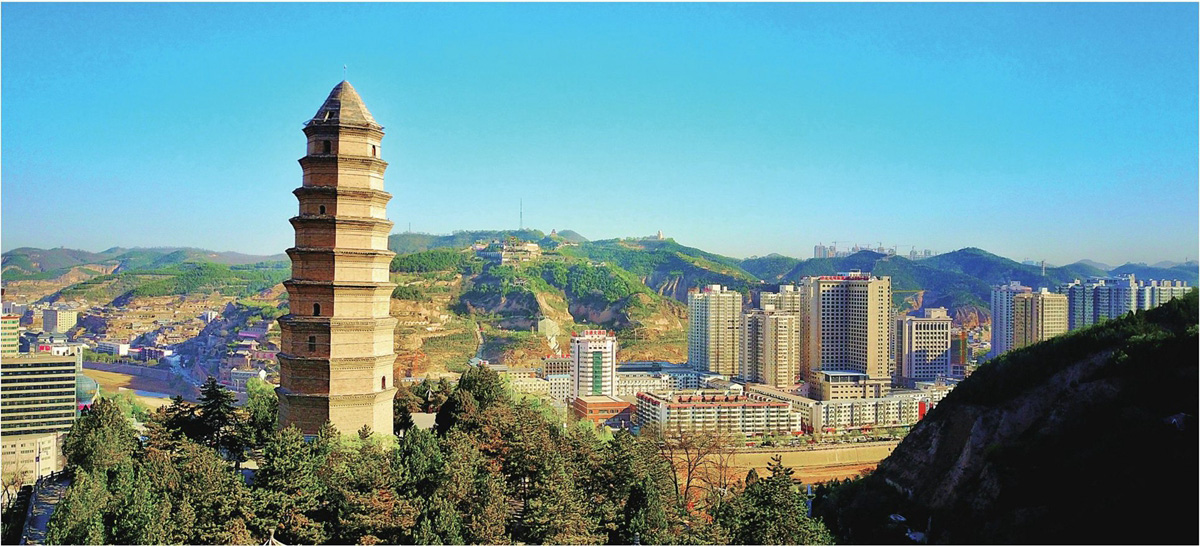
延安寶塔山

紅色小鎮照金鎮
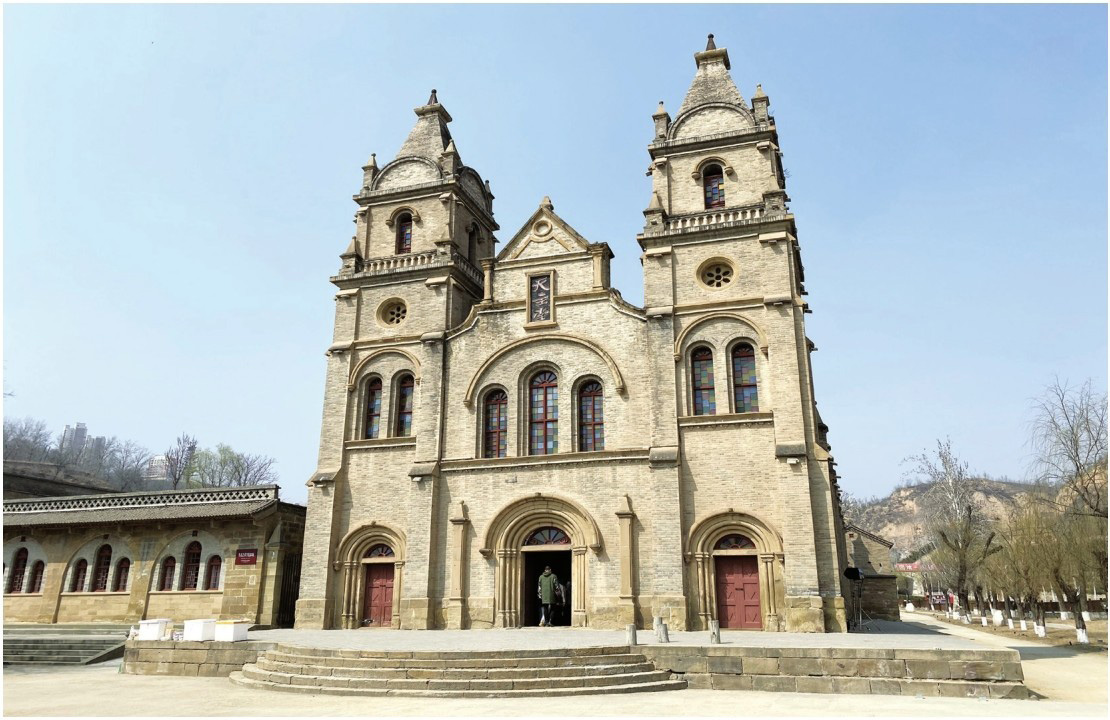
魯迅藝術文學院舊址
Shaanxi is the cradle of revolution, and Yan'an is the sacred land of Chinese revolution. From 1935 to March 1948, Yan'an was the home to the CPC Central Committee and the overall rear base for the Chinese people's struggle for liberation. The Yan'an Spirit, nurtured by Mao Zedong and other revolutionary leaders of his generation, is great treasure of the Chinese national spirit. Yan'an is home to over 400 old revolutionary sites, among which the most famous ones are Mount Baota, Mount Fenghuang, Yangjialing, Zaoyuan,Wangjiaping and the site of Shaanxi-Gansu-Ningxia Border Government.
The Zhaojin Revolutionary Base in Shaanxi-Gansu Border Region is located at Yaozhou District, Tongchuan City. In the early 1930s, the older generation revolutionary leaders including Liu Zhidan, Xie Zichang and Xi Zhongxun bravely carried out revolutionary activities under extremely arduous conditions. They founded Shaanxi-Gansu Border Region Revolutionary Base with Zhaojin as the center. The establishment of Shaanxi-Gansu Border Region Revolutionary Base kindled the revolution in northwestern China, created conditions for the later Northern Shaanxi Revolutionary Base, and wrote a brilliant chapter in China's revolutionary history.
In 2004, the Memorial Hall of Zhaojin Revolutionary Base in Shaanxi-Gansu Border Region was officially opened. It is one of China's 100 revolutionary scenic spots.
民間文化
Folk Culture
陜西民間藝術豐富多彩,地域特色鮮明。許多項目被列入“國家級非物質文化遺產名錄”。戶縣(今西安市鄠邑區)、安塞(今延安市安塞區)等縣區被文化和旅游部命名為“全國民間繪畫之鄉”;安塞、鳳翔、千陽縣南寨鎮、合陽縣甘井鎮等被文化和旅游部命名為“中國民間文化藝術之鄉”;安塞被中國文聯、中國曲協評為“中國曲藝之鄉”,是陜西省唯一的全國文化“五鄉”(此前安塞被文化和旅游部授予“腰鼓之鄉”“剪紙之鄉”“民間繪畫之鄉”“民歌之鄉”)。目前陜西省入選聯合國教科文組織人類非物質文化遺產代表作名錄的有西安鼓樂、中國剪紙、中國皮影戲、咸陽茯茶制作技藝四項。
秦腔是中國最具代表性的古老劇種之一,源于陜西、甘肅一帶的民間曲調和宋、金、元的鐃鼓雜劇,陜甘一帶古為秦地,故稱其為“秦腔”。又因其以棗木梆子為擊節樂器,所以又叫“梆子腔”,俗稱“亂彈”。
陜北民歌、陜北剪紙具有濃郁的黃土文化和邊塞文化特色;扭秧歌、安塞腰鼓等傳統民間藝術也從陜北走向了世界。
華陰老腔曲風高亢豪邁、自在隨性,是關中地區的代表性民間文化;社火是關中地區傳統的民俗文娛活動;鳳翔彩繪泥塑、鳳翔木版年畫和戶縣農民畫等關中民間藝術體現了豐富多彩的民風民俗。
陜南地區的漢劇為京劇的形成做出過特殊貢獻;紫陽民歌是陜南地區傳統民歌中最具代表性的曲種。
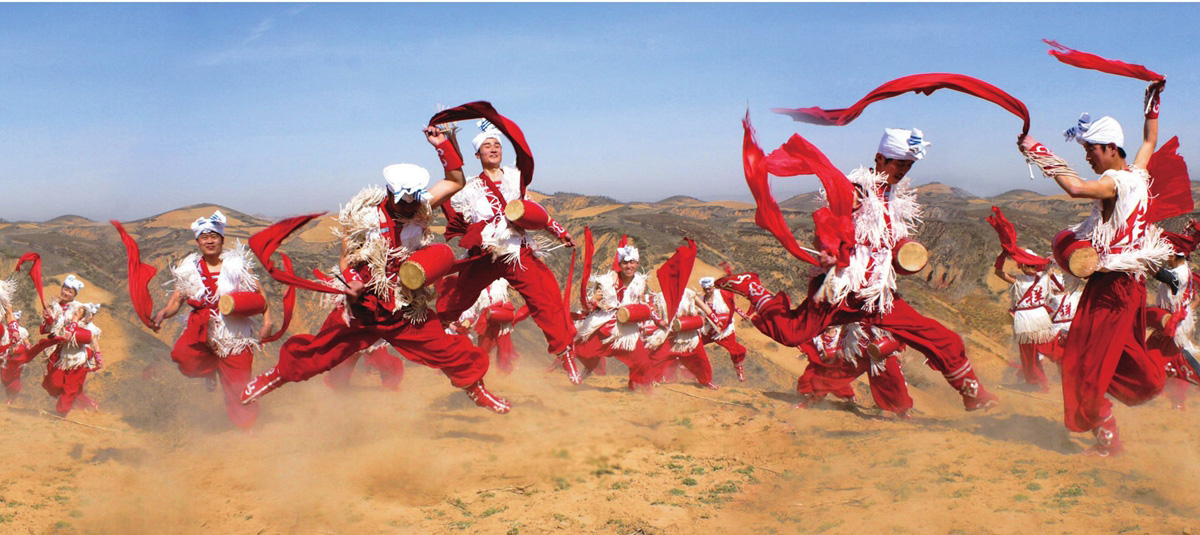
安塞腰鼓
There are a variety of folk art with outstanding regional features in Shaanxi. Many of them have been included in the list of National Intangible Cultural Heritage. The counties of Huxian(Huyi District, Xi'an) , Ansai (Ansai District,Yan'an), and other counties are named as "Hometown of National Folk Painting"; Ansai, Fengxiang counties as well as Nanzhai Township in Qianyang County and Ganjing Township in Heyang County are named as "Hometown of Chinese Folk Art" by Ministry of Culture and Tourism. Ansai County is granted the title "Hometown of Chinese Quyi (ballad-singing and storytelling)" by Chinese Ballad Singers Association and China Federation of Literary and Art Circles. Ansai is the only one in Shaanxi to be named hometown for five sorts of folk art (It was previously granted the honor of hometown of waist drums, paper-cutting, folk painting and folk songs by Ministry of Culture and Tourism). Xi'an Drum Music, Chinese Paper-cutting and Chinese Shadow Puppets have been inscribed in the UNESCO Intangible Cultural Heritage List.
Qin Opera is one of the most representative old operas of China. It originated in the folk tunes and the timbrel opera of the Song, the Jin and the Yuan dynasties along Shaanxi and Gansu. The area around Shaanxi and Gansu was within the territory of the Kingdom of Qin, hence the name Qin Opera. As jujube wood bangzi (slit drum) is used for percussion in the performance, it is also called Bangzi Opera or Luantan (strum) by the locals.
Northern Shaanxi Ballads and Northern Shaanxi Paper-cutting enjoy rich Loess and border cultural features. Yangge Performance, Ansai Waist Drum and other traditional folk art spread from Northern Shaanxi to the rest of the world.
Huayin Laoqiang Opera enjoys vigorous, majestic, free and unconstrained features, representative of the folk culture in the Guanzhong Plain. Shehuo (village and township festival parade) is a traditional folk custom and cultural activity in the area. Fengxiang Color-painted Clay Figurines, Fengxiang Xylograph New Year Pictures, Huxian County Peasant Painting, and other folk art in the Guanzhong Plain elaborately and vividly delineate the colorful customs with a plain style.
In Southern Shaanxi, Hanju Opera made special contributions to the formation of the Peking Opera. Ziyang Folk Song is the most representative among traditional folk songs.
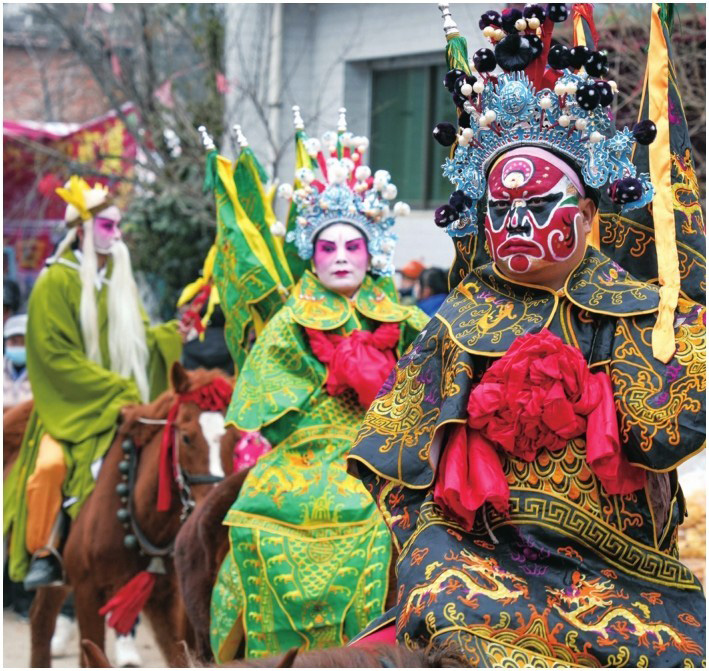
周至十八會上的“馬社火”
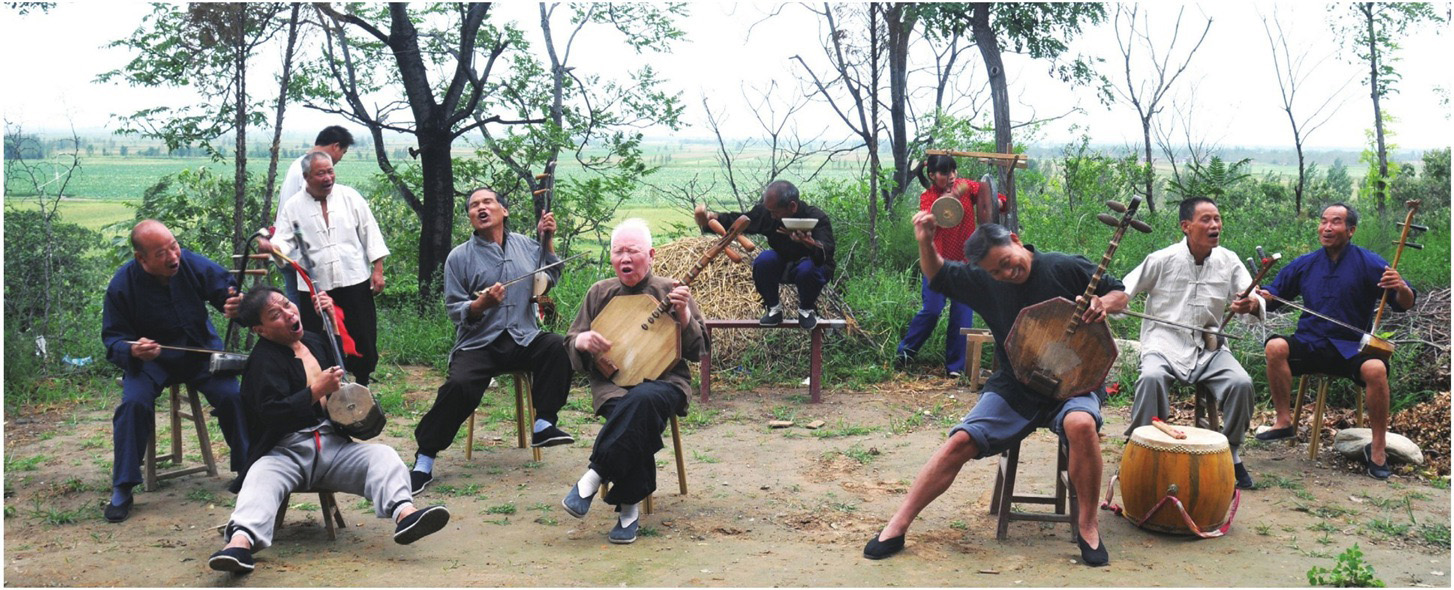
華陰老腔
現代文化
Modern Culture
隨著時代的發展,新興的文化形態與陜西的古老文化不斷交融,創業咖啡街區為陜西創新創業注入了強大動力,成為展示城市新風貌的時尚地標。
陜西大劇院是西北地區首個國際化、專業化、綜合性的大劇院,也是展示古都文化魅力的重要窗口。
西安音樂廳是西北地區首屈一指的演出場館,更是享譽古城西安的文化地標。
With the development of times, new cultural forms continuously integrate with ancient Shaanxi culture. Xi'an Inno Start-up Wonderland infuses new vitality to the city's innovation and development, and has become a beautiful modern landmark for fashion.
Shaanxi Opera House, the first international,professional and comprehensive theater in northwestern China, is an important window of Shaanxi to exhibit the cultural charm of its ancient capital.
Xi'an Concert Hall, the No.1 performance venue in northwestern China, is a renowned cultural landmark of the ancient city.
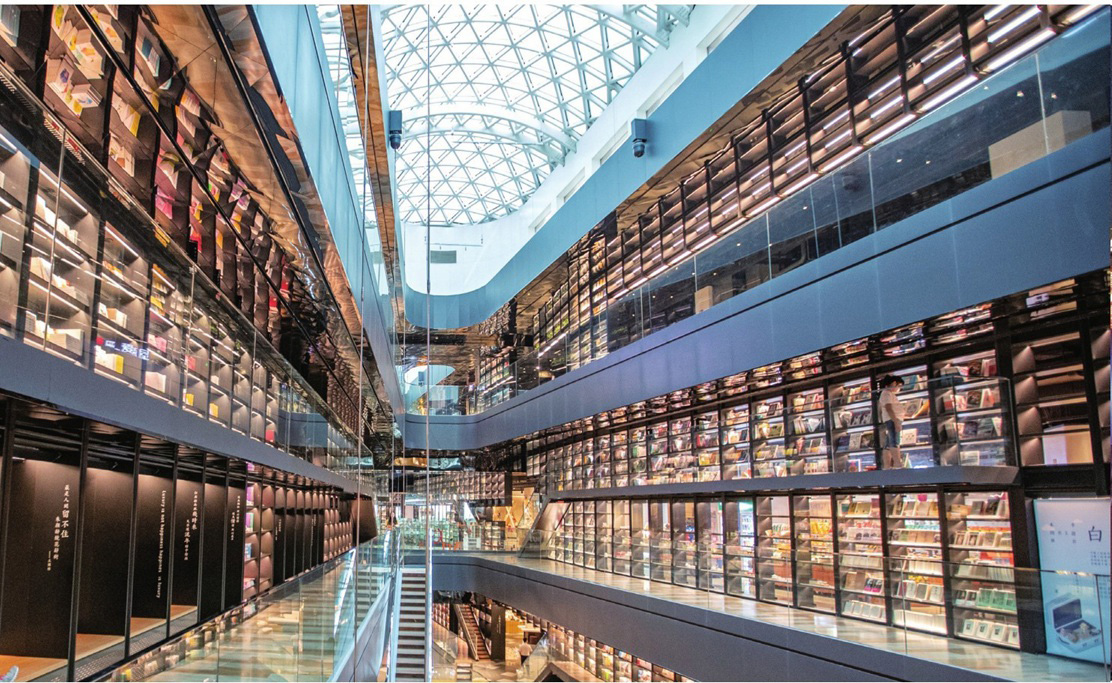
西安藍海風書店
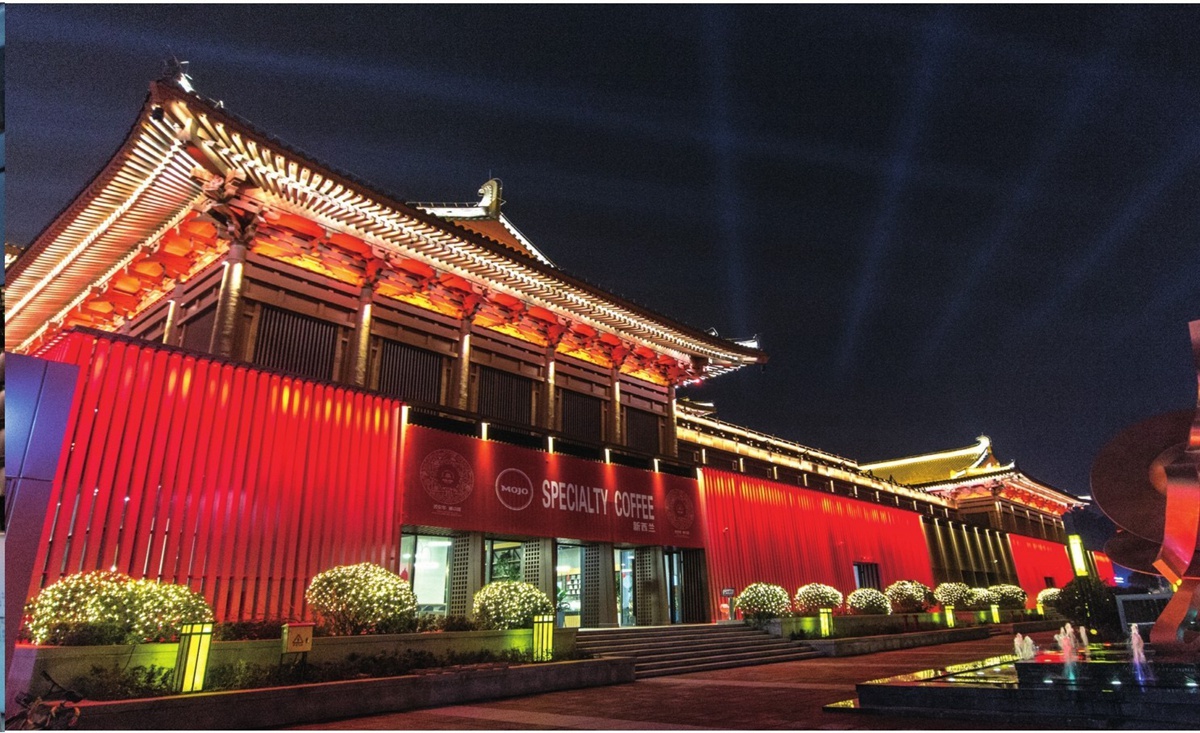
陜西大劇院